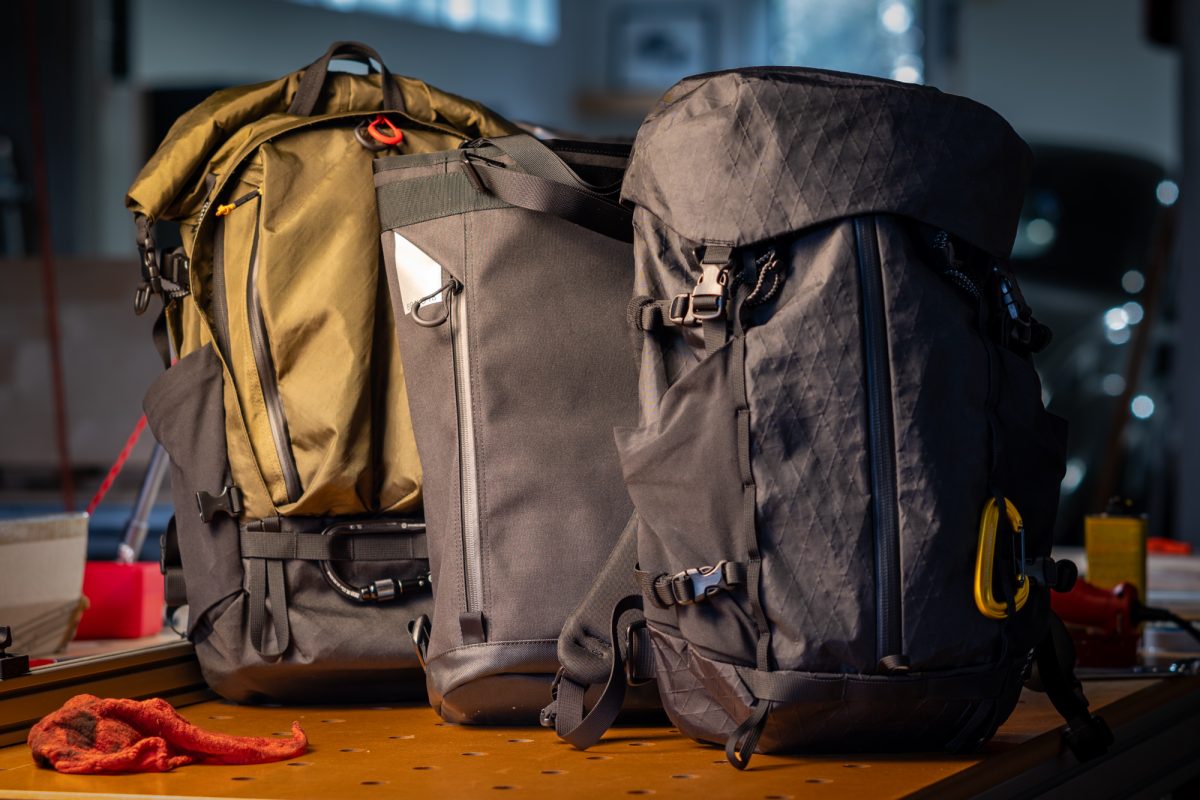After getting my hands on both the Alpha 31 and Bravo 18, I felt compelled—no, driven—to complete the trilogy and dive into the Charlie 25. Now, if the Bravo is the scrappy younger sibling, then the Charlie is the middle child with a chip on its shoulder, desperate to prove its worth through sheer complexity. The thing looks deceptively small on your back, but then it opens up like a Pandora’s box of capacity, surprising you with what it can haul.
But let’s talk about those complexities. First, the strap system. The Bravo, in its no-nonsense way, opts for simple, padless webbing, while the Charlie opts for well-engineered foam straps—easily among the most comfortable I’ve ever had the pleasure of slinging over my shoulders. You need that extra support, too, because the Charlie can carry more than you’d expect. And where the Bravo is essentially an empty bucket, the Charlie is a goddamn labyrinth of velcro and zippered pockets, giving you more ways to stash your gear than you can imagine. And then there’s the “brain.”
Both the Bravo and Charlie feature cinch tops, but the Charlie ups the ante with this “brain” cover—Remote Equipment’s answer to keeping your gear dry and adding two slick quick-access pockets. The brain, of course, is removable because why the hell not? You can cinch down the top, throw on the brain cover for some extra weather protection, or strip it all down and keep it light. The versatility is almost maddening.
And it doesn’t stop there. The Charlie was designed to integrate with Remote Equipment’s “Org Kits”—beautifully engineered pouches that can be strapped to the outside via the compression straps or tucked away inside the bag’s perfectly sized pockets. They claim it’s a 25L bag, but on your back, it feels like a tight, compact 15L. It’s only when you start adding the Org Kits, expanding its capacity to 30L, that it begins to resemble a traditional pack in size.
But this versatility comes with a price. The Charlie is a strappy beast—load lifter straps, compression straps, straps for the brain, straps on top of straps… I’ve managed to keep them under control, and they don’t bother me, but if you’re one of those folks who can’t stand a dangling strap, it’s something to think about. Still, I wouldn’t let it be a dealbreaker. Give it a shot before you shoot it down.
Now, where does the Charlie stand next to the Alpha and Bravo? It’s clear the Charlie is an evolution of the Bravo—more capacity, more comfort, more flexibility. The Bravo is your “kick-around” bag, perfect for when you need to carry a casual load but don’t need a formal platform to do so. The Charlie, on the other hand, means business. It’s serious, adaptable, and more focused.
But when you stack the Charlie against the Alpha, things get murky. Both bags serve a similar purpose and are among the most versatile on the market. I’d say the Charlie leans more towards outdoor adventures, while the Alpha is better suited for travel. Both excel at everyday carry—so, pick your poison.
As for me, I’m not much of a hiker, and I’ve fallen hard for the Alpha 31. It does everything I need it to and more. But still, I can’t quite bring myself to part with the Charlie. It’s just so damned comfortable, so smartly designed, that I enjoy having it around. Maybe once the honeymoon phase is over, I’ll do the responsible thing and sell it off. But for now, it stays.

My Overall Remote Equipment Impressions
I’ve spent the last decade with GORUCK bags, know them inside and out, and I am entirely at home with the platform. So, shifting over to Remote Equipment has been an enlightening experience. GORUCK bags are built like tanks, meant to last forever, but there’s a sense that they’ve crossed into fashion territory. Limited editions, collaborations with exotic textiles, and prices that could make your wallet cry—the GORUCK market is becoming as hype-driven as the sneakerhead scene, and frankly, it’s wearing thin.
Remote Equipment, on the other hand, is the lone wolf. No collaborations, no limited editions—they barely even market themselves. Instead, they just keep their heads down and churn out innovative, incredibly usable gear at prices that are high but stable. And that? That I can respect.
Learn more about Remote Equipment here.
Editor’s Note: I don’t know a single person at Remote Equipment. In fact, I’ve never had a single communication with the company. This post isn’t sponsored.